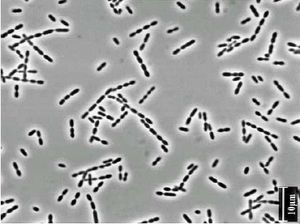Cellulose Degradation in the Rumen
Cellulose Breakdown by Microorganisms in the Rumen
Introduction
A diverse group of microbes live within the digestive systems of ruminants, which include some animals with plant-based diets such as cows, sheep, deer, and goats. The microbes allow the animals to break down complex plant materials such as amino acids, cellulose, starch, and sugars into simpler products that can then be broken down by the animal’s own metabolism. Ruminants have a four-chambered gut, and these microorganisms live primarily in the rumen. One particularly important bacterial genus that takes part in the degradation of cellulose is Ruminococcus. Ruminococcus bacteria break down the plant fiber into the monosaccharide glucose, which can then be further broken down through glycolysis. This symbiotic relationship enables ruminants to digest this fiber without having to encode for more enzymes to do this job in their own genomes. The relationship with microbes provides ruminants with about 15% of their caloric intake. The Ruminococcus genus, which includes Ruminococcus albus and Ruminococcus flavifaciens, is just one of many microbes living in the rumen. Others include Megasphaera, Fibrobacter, Streptococcus, Escherichia, Chytridiomycetes fungi, and methanogens. The proportions of microbes present vary greatly depending upon the diet of the ruminant. For this reason, the diets of the animals greatly impact their own health, and also effects consumers of their meat and the environment as a whole.
The Four Chambered Stomach and Function of Ruminant Microbes
Include some current research in each topic, with at least one figure showing data.
Metabolic Pathway
Include some current research in each topic, with at least one figure showing data.
Factors that Effect the Microbe Population
Include some current research in each topic, with at least one figure showing data.
Conclusion
Overall paper length should be 3,000 words, with at least 3 figures.
References
Slonczewski JL and Foster JW. 2009. Microbiology: An Evolving Science. 2nd Edition. W.W. Norton, New York: 822-825.
Edited by KatiePruett, a student of Nora Sullivan in BIOL187S (Microbial Life) in The Keck Science Department of the Claremont Colleges Spring 2013.

